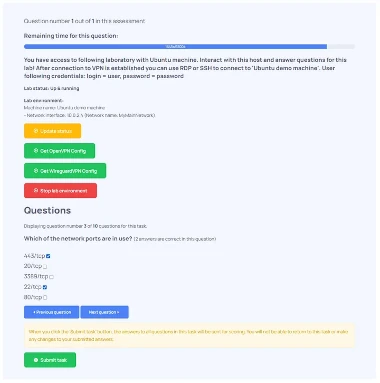
The Revolutionary Approach of Data-Driven Hiring

Every year, companies around the world spend huge resources on recruiting. Significant amounts of time, money, and manpower are expended on sourcing candidates, conducting interviews, and deciding who to hire. Recruitment is a critical function that can determine an organization's success or failure, hence its importance. Under traditional hiring methods, this process is often full of inaccuracies and subjectivity, resulting in suboptimal hiring decisions. However, modern advancements in technology and data analytics have given rise to a revolutionary approach known as data-driven hiring.
Data-driven hiring employs advanced analytics, statistical modeling, and objectivity, effectively changing how we approach talent acquisition. It introduces greater precision, speed, and fairness to the recruitment process, becoming a transformative tool for HR departments globally. In this article we will discuss different aspects of data-driven hiring, see its implications within the modern recruitment landscape, analyze how it can eliminate inherent biases, and explore how it serves to increase efficiency within Human Resources (HR). Additionally, we will evaluate how data-driven metrics measure the success of recruitment strategies.
Unraveling Data-Driven Hiring
The science behind data-driven hiring is a broad topic encompassing numerous methodologies and technologies. To fully understand it, we need to split this chapter into two sections covering the science behind data-driven hiring and the processes involved.
Data-driven hiring is a systematic recruitment approach that extensively uses data and statistical analysis. This method informs and optimizes every step within the hiring process, from candidate sourcing to final selection. In contrast to traditional practices that rely heavily on intuitive judgments and personal biases, data-driven hiring integrates factual evidence and robust statistics to help make unbiased informed decisions.
As the job market becomes progressively competitive, the value proposition of data-driven hiring is increasingly visible. Organizations adopting this approach go beyond relying on instinctual judgments and subjective interpretations. Instead, they embrace quantifiable metrics and objective evaluation, altering the way recruitment is perceived.
Predictive modeling forms the bedrock of data-driven hiring. It uses statistical techniques like machine learning and AI algorithms, drawing from current and historical facts to predict future outcomes. Within the context of hiring, predictive modeling uses extensive data—from an applicant's educational background and employment history to their skills and personality traits—to forecast their potential fit within an organization.
By incorporating these models, recruitment teams can do away with guesswork, minimize biases, and improve the precision of their hiring forecasts. Thus, predictive modeling's role in recruitment is fundamental, transforming the process into an evidence-backed, objective approach that significantly enhances efficiency and accuracy.
In today's landscape, data serves as a powerful driving force across numerous industries, including HR and recruitment. At every stage of the recruitment process—from sourcing candidates to analyzing resumes, scoring assessments (like the assessments we offer), and making final decisions—data is generated and utilized. Harnessing these large and diverse datasets allows HR professionals to enhance the objectivity of the hiring process, diminish biases, and streamline operations, thus revolutionizing conventional recruitment practices.
The influence of data goes beyond individual instances of recruitment, touching upon the entire strategy of talent acquisition. The integration of data into these strategies makes them more agile and adaptable, making it easier to respond effectively to changing trends in the job market. With data incorporated into their practices, recruiters can exercise better control over their processes and outcomes.

Harnessing Advanced Analytics to Identify Top Talent
In the modern recruiting landscape, advanced analytics tools are no longer optional—they're essential. These intelligent solutions assist HR professionals in streamlining their operations. For instance, they can quickly screen thousands of CVs in a fraction of the time it would take with manual methods. Their capabilities extend beyond mere screening; these tools are equipped with embedded predictive analytics abilities that allow them to pinpoint potential candidates who might not actively be seeking employment but could still be an excellent match for certain roles.
Beyond automation, advanced analytics also provide insightful metrics that help HR professionals monitor the efficiency and effectiveness of their recruitment activities. Metrics such as cost per hire, time to fill, candidate source efficiency, applicant conversion rates, quality of hire, among others, enable them to measure their recruiting performance and continuously optimize their recruitment strategies.
Additionally, advanced analytics can analyze patterns and connections from different sources and viewpoints, enabling recruiters to gain a holistic view of candidates and make informed decisions accordingly. This greatly improves how companies can locate top talent, faster and more accurately than ever before.
Case studies offer concrete insights into the effectiveness of advanced analytics in recruitment. A prime example is Amazon, the global e-commerce giant. Confronted with millions of job applications each year, Amazon leverages machine learning algorithms to filter out the most qualified candidates. By analyzing data points such as keywords in resumes and performance on online assessments, Amazon's ML model helps identify top talent, thereby significantly reducing time-to-hire.
Such real-world instances illustrate the implications of advanced analytics in recruitment, demonstrating how it assists businesses in finding the right persons for the right roles at the right time—all driven by data and technology.
Forecasting Candidate Success with Data Analysis
Predictive analytics extend beyond merely identifying suitable candidates. They provide in-depth insights into a prospective employee's potential success within a given role. Multiple factors play a part here—historical performance records, skill set analysis, behavioral tendencies, cultural fit, and others. These components contribute towards predicting a candidate’s future performance, thus playing a critical role in data-driven hiring.
Moreover, predictive analytics also support HR managers in making strategic decisions about workforce planning, succession planning, learning and development initiatives, productivity improvement programs, among others. By providing evidence-based forecasts about potential outcomes, they enable organizations to adopt proactive measures and make informed decisions that will enhance their competitive advantage.
Consider a scenario where a tech company seeks to hire a front-end developer. Utilizing predictive analytics, the company could analyze previous projects undertaken by a candidate, evaluate their performance on coding tests (what we offer - see our assessment profiles: Front-end Developer (Angular), Front-end Developer (React) and Front-end Developer (Vue.js)), study personality traits, and probe into behavioral attributes. This enables them to accurately predict the candidate's likelihood of success within the team. Therefore, data-driven hiring not only improves recruiting efficiency but also boosts long-term productivity by ensuring new hires are a deserving fit for their assigned roles and align well with the organizational culture.
Another practical application of predictive analytics in hiring can be seen in university admissions. Many universities are now using predictive analytics to identify applicants who are most likely to succeed in their courses and contribute positively to the university’s community. These institutions analyze past applicants' academic records, standardized test scores, extracurricular activities, and other relevant factors to predict future students' performance.

Eliminating Bias with Advanced Analytics
Inherent biases often infiltrate traditional hiring processes, resulting in unfair outcomes. There have been cases of favoritism directed towards candidates who graduated from prestigious universities, alongside discriminatory practices grounded in age, gender, ethnicity, or other personal qualities. These biases don't only undermine diversity and inclusion initiatives but also stifle creativity, innovation, and strategic growth within organizations.
Data-driven hiring proposes a viable solution to counter these harmful biases. It emphasizes decision-making based on merit and objective information rather than subjective perceptions. By constructing a recruitment process centered around quantifiable metrics, equal opportunities are ensured for all candidates, irrespective of their backgrounds.
For example, IBM uses Artificial Intelligence (AI) and machine learning tools in its HR system to mitigate unconscious bias during hiring. This promotes a more diverse and inclusive workforce, subsequently enhancing creativity and productivity while fostering a positive and accepting corporate culture.
The integration of advanced analytics into recruitment allows us to continually refine our techniques for better results. With consistent feedback provided by these analytics, we can fine-tune our practices over time to achieve an increasingly impartial and effective recruitment process.
Boosting HR Efficiency through Intelligent Data Analytics
Apart from promoting objectivity in hiring, data analytics dramatically enhances the efficiency of HR operations as well. Automating tasks associated with collecting and processing data eliminates time-consuming manual work. This shift in focus allows HR professionals to concentrate more on strategic functions rather than administrative duties, thus improving productivity by reducing time-to-hire and enhancing the overall quality of hires.
Moreover, leveraging data analytics in HR can aid in the proactive management of talent pipelines. Tools capable of tracking active and passive candidates can help recruiters build relationships with potential candidates long before a relevant position becomes available. This proactive recruitment strategy can result in higher offer acceptance rates and faster time-to-fill, especially for hard-to-fill roles or niche skill sets.

Quantifying the Success of Recruitment Strategies with Data-Driven Metrics
Measurable metrics like cost-per-hire, time-to-fill, quality-of-hire, and retention rate serve as potent tools for evaluating a recruitment strategy's effectiveness. These numbers offer invaluable insights into a company's hiring process strength and weaknesses while highlighting areas requiring necessary improvements. Within the context of data-driven hiring, these metrics hold heightened importance as they provide clear evidence indicating the effectiveness of the approach.
Additionally, advanced analytics also allow for the measurement of less noticeable but equally critical aspects such as employer brand strength, candidate experience, diversity and inclusion, and internal mobility. Combining these qualitative aspects with traditional recruitment metrics provides a more holistic view of the overall recruitment performance, which then paves the way for more strategic and informed decision-making.
Data science has the power to transform traditionally subjective processes into quantifiable ones, enabling organizations to continually optimize for better results over time. Google's People Analytics team is a fine example of this. Leveraging sophisticated analytics techniques, they pull out insights on optimal team size, traits of effective managers, and means to increase employee satisfaction and productivity. Thus, the measurement of recruitment metrics using advanced analytics can significantly impact an organization's success, fostering an environment of continuous learning and improvement.
The Future Outlook and Challenges for Data-Driven Hiring
Data-driven hiring represents a significant advancement in recruitment practices that promise increased efficiency, accuracy, and fairness. However, as we embrace this revolutionary approach and tap into its enormous potential, it's equally important to consider future prospects and challenges to better prepare ourselves and ensure continued growth and improvement.
Data-driven hiring is becoming the norm, and the future will likely present new opportunities and challenges. It's vital to anticipate potential roadblocks such as privacy concerns or reliability issues that may arise with advanced technologies and intensifying competition for talent. Understanding these dynamics will enable us to refine our strategies proactively and stay ahead of the curve.
While discussing challenges, it's crucial to mention the high initial costs associated with implementing data-driven hiring. Many companies, especially small and medium-sized enterprises (SMEs), may find it challenging to invest in sophisticated data analytics tools and technologies. Overcoming this financial hurdle would require innovative strategies, such as collaborating with tech partners or adopting pay-per-use cloud-based solutions.
Moreover, the rapid evolution of AI and machine learning technologies calls for constant updates and adaptations, which could be technically complex and time-consuming. Companies will need to upskill their HR teams and possibly hire data scientists so they can effectively manage and interpret the vast amounts of data generated during the recruitment process.
We should also be mindful of emerging trends, such as the growing importance of the employee experience, the impact of artificial intelligence, and the increasing reliance on soft skills. Keeping an eye on these changes will help us adapt quickly and make the most of the opportunities that these trends present.
Finally, while data-driven hiring promises several benefits, there are still ethical considerations and legal regulations to be wary of. With the increasing digitization of personal information, concerns about data privacy and security have grown. Organizations will need to ensure they strictly comply with all relevant legal requirements and employ robust data security measures to protect candidate information. Properly addressing these concerns will not only prevent legal consequences but also contribute to building trust and transparency with prospective candidates.

Conclusion: The Transformative Impact of Data-Driven Hiring
Data-driven hiring is an innovative approach that's reshaping how organizations recruit. It combines scientific rigor with practical applicability, promising an era of precision, efficiency, and fairness in recruitment that traditional methodologies cannot match. Its potential is immense and is set to shape the future of recruitment by altering how we hire, who we hire, and why we hire.
However, while harnessing its power, it's paramount to adhere to privacy laws and uphold the highest standards of ethical conduct when handling candidate data. A clear understanding of data privacy regulations and the establishment of robust data security protocols are critical to maintaining trust and securing the benefits of data-driven hiring.
By integrating data science with recruitment, businesses across sectors can create dynamic, diverse, and effective workforces capable of navigating today's unpredictable corporate landscape. Organizations investing in data-driven hiring are not just equipping themselves for immediate efficiency gains but also preparing for the future of work.
As we look forward to what lies ahead, drawing lessons from our experiences and staying alert to evolving trends will help us leverage data-driven hiring to build stronger, more resilient organizations—fully prepared to face the challenges and opportunities of tomorrow.
Wpisy powiązane
Wszystkie wpisyOtrzymaj trzy pełne testy zupełnie za darmo!
- Zawiera wszystkie dostępne profile stanowisk
- Zacznij już teraz oceniać umiejętności swoich kandydatów
- Brak ograniczeń czasowych – zarejestruj się teraz, a bezpłatne testy wykorzystaj później
- Zawiera wszystkie dostępne profile stanowisk
- Zacznij już teraz oceniać umiejętności swoich kandydatów
- Brak ograniczeń czasowych – zarejestruj się teraz, a bezpłatne testy wykorzystaj później
